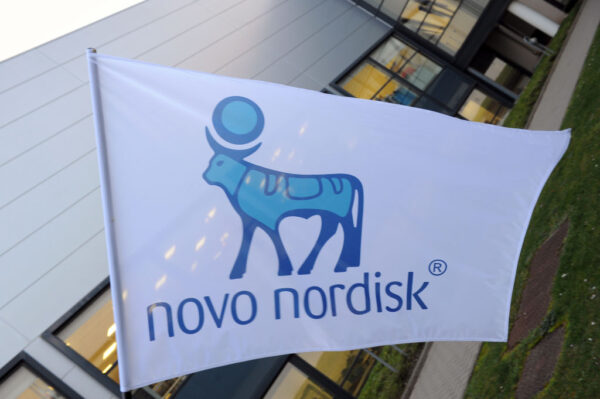
A next-generation Novo Nordisk metabolic disorder drug led to statistically significant weight loss in a pivotal test in participants with obesity and type 2 diabetes, results it says support plans for regulatory submissions. What’s less clear is whether the results are enough to make the therapy competitive with rival Eli Lilly and others in obesity drug R&D.
The preliminary data reported Monday show the once-weekly injectable drug, CagriSema, led to 15.7% weight loss in those who adhered to treatment through 68 weeks compared to 3.1% for the placebo group. Taking into account all participants, including those who dropped out of the study, CagriSema achieved 13.7% weight loss compared to 3.4% for the placebo. The trial employed a flexible design that allowed patients to modify their dosing throughout the study. Novo Nordisk said 61.9% of participants were treated with the highest dose of the study drug after 68 weeks.
Despite beating the main efficacy goal of showing weight loss of 5% or more, the results are below expectations. Phase 2 testing showed the drug led to 15.6% weight loss at 32 weeks, so Novo Nordisk and investors were hoping that longer duration of treatment would achieve greater weight loss.

Solving Healthcare’s Provider Data Problem Starts with Interoperability
Break down the silos. Take control of your provider data.
It’s the second disappointing data readout for CagriSema. Late last year, Novo Nordisk reported data from a Phase 3 test in participants with obesity and one or more comorbidities. Results showed 17.4% placebo-adjusted weight loss at 68 weeks. Novo Nordisk said Monday that detailed results from both CagriSema Phase 3 studies will be presented at a scientific meeting later this year. The company added that it plans to seek the first regulatory approval for the drug in the first quarter of 2026.
CagriSema is one of a growing number of drugs being developed to show that hitting two targets is better than one for achieving weight loss. It’s important for Novo Nordisk, which has several shots on the goal of developing a successor to the blockbuster seller Wegovy, a GLP-1 receptor agonist. CagriSema combines semaglutide, the main ingredient in Wegovy, with cagrilintide, another engineered peptide. Cagrilintide, a long-acting version of the hormone amylin, activates the amylin receptor, which plays a role in regulating blood sugar and food intake.
William Blair analysts Andy Hsieh and Matt Phipps wrote in a research note that adults with both overweight and obesity as well as type 2 diabetes represent the patient group for which CagriSema had the best chance to top Eli Lilly’s Zepbound, an agonist of the GLP-1 and GIP receptors. That expectation made CagriSema’s data readout especially disappointing, they said.
Acknowledging the caveats that come with cross-trial comparisons, the William Blair analysts said CagriSema’s weight loss data put the drug in the range of weight loss achieved by Zepbound. Safety and tolerability comparisons remain unclear. Novo Nordisk did not disclose detailed tolerability data for CagriSema, other than to say the most common adverse events were gastrointestinal. Most of these problems were classified as mild to moderate, and they diminished over time, consistent with the GLP-1 drug class, the company added.

What Are Healthcare Organizations Getting Wrong about Email Security?
A new report by Paubox calls for healthcare IT leaders to dispose of outdated assumptions about email security and address the challenges of evolving cybersecurity threats.
To the William Blair analysts, the dual-acting drugs likely offering the most promising weight loss generalizable to the broadest patient population include Lilly’s Zepbound as well as experimental therapies in development by Amgen, Viking Therapeutics, and Roche. They added that the CagriSema results may inform the strategy for AbbVie, which last week announced a $350 million deal for rights to a Gubra obesity drug in Phase 1 testing. Gubra’s drug is a peptide engineered to activate the amylin and calcitonin receptors to spark metabolic effects.
CagriSema also has a manufacturing disadvantage, said Leerink Partners analyst David Risinger. The two main ingredients in this drug cannot be dissolved together, so it must be administered by an injection device with two chambers. Novo Nordisk’s manufacturing capacity for CagriSema is still undetermined, he said in a research note.
Photo: Jean-Francois Monier/AFP, via Getty Images






